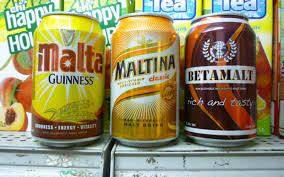
The delicious and versatile sausage roll has become a popular snack around the world. In Nigeria, the production of sausage rolls is now a viable commercial enterprise, offering a wide range of flavors and textures.
In this blog post, we explore the commercial production of sausage rolls in Nigeria, looking at the different processes involved, the ingredients used, and the potential for growth in the industry.
We'll also look at some of the challenges facing the sausage roll industry in Nigeria and how producers can address these issues. So, let's dive in and learn more about the commercial production of sausage rolls in Nigeria.
History and popularity of sausage rolls in Nigeria
Sausage rolls are a popular snack in Nigeria and have become a staple in many households, especially among children. The origin of sausage rolls in Nigeria is not clear, but it is believed to have been introduced by British expatriates during the colonial era.
Over time, the snack has become an integral part of Nigerian cuisine and is now widely available in bakeries, supermarkets, and roadside eateries across the country. The popularity of sausage rolls can be attributed to its convenience, affordability, and taste.
In Nigeria, sausage rolls are often eaten as a quick breakfast or snack, especially by commuters and school children. They are also served at parties, weddings, and other social gatherings as a light finger food.
Sausage rolls come in different variations, including the classic pork sausage roll, chicken sausage roll, beef sausage roll, and vegetable sausage roll. Some bakeries also offer spiced or spicy sausage rolls to cater to customers who prefer a more intense flavor.
Despite the competition from other snack options, such as chin-chin and meat pies, sausage rolls remain a firm favorite among Nigerians and are expected to continue to grow in popularity.
Process of commercial production
The process of commercial production of sausage rolls involves a series of steps to ensure the production of high-quality products. Here is a breakdown of the steps involved in the process:
1. Preparation of ingredients: The first step in commercial production of sausage rolls is the preparation of ingredients. This includes the mixing of flour, salt, sugar, yeast, butter, and other ingredients needed for the dough.
2. Making the dough: Once the ingredients have been prepared, the next step is to mix them together to form the dough. This is done using mixing machines that are specially designed for this purpose.
3. Rolling and cutting: The dough is then rolled out and cut into the desired shapes and sizes. The sausage meat filling is then added to the dough.
4. Baking: The sausage rolls are then baked in large ovens at high temperatures for a specific amount of time. This ensures that the sausage rolls are fully cooked and have a crispy texture.
5. Cooling and packaging: Once the sausage rolls have been baked, they are cooled and packaged. This is done using specialized machines that ensure that the sausage rolls are properly wrapped and sealed.
6. Distribution: The sausage rolls are then distributed to various outlets such as supermarkets, restaurants, and fast-food chains.
It is important to note that the process of commercial production of sausage rolls is highly regulated to ensure that the products meet the required quality standards. As such, manufacturers must adhere to strict hygiene and safety standards throughout the production process.
Ingredients used in making sausage rolls
Sausage rolls are made with a combination of ingredients that provide flavor, texture, and nutritional value. The primary ingredient is ground meat, usually pork, chicken, or beef. In Nigeria, beef sausage rolls are the most popular. Other ingredients include flour, water, seasonings, and vegetable oil.
The flour is used to make the pastry for the sausage rolls. It is mixed with water and vegetable oil to form a dough, which is then rolled out into thin sheets. The sheets are cut into rectangular shapes and wrapped around the meat filling.
The meat filling is made by combining ground beef with seasonings such as salt, pepper, garlic, and onion powder. Some commercial producers also add vegetables like carrots and peas to the filling to enhance the nutritional value of the sausage rolls.
Preservatives and additives may also be added to the filling to extend its shelf life. However, there is growing concern among consumers about the health implications of these additives, and some companies are now producing sausage rolls with fewer preservatives and additives.
Overall, the ingredients used in making sausage rolls are relatively simple and easy to obtain, making them a popular snack food in Nigeria. However, the quality and nutritional value of the sausage rolls can vary depending on the ingredients used and the production process. As such, consumers should be vigilant about reading ingredient labels and choosing high-quality products.
Equipment needed for commercial production
To produce sausage rolls commercially, a number of equipment is needed. Some of these equipment include:
1. Dough mixers: This equipment is used to mix the dough ingredients together to form a smooth and uniform dough.
2. Sausage filler machine: This machine is used to fill the dough with the sausage meat. It ensures that the meat is evenly distributed in the dough.
3. Oven: This is where the sausage rolls are baked to perfection. The oven should be of high quality to ensure even baking and consistent results.
4. Cooling rack: After baking, the sausage rolls need to cool before they can be packaged. A cooling rack ensures that the sausage rolls cool evenly and retain their shape.
5. Packaging machine: This machine is used to package the sausage rolls. It should be efficient, fast, and capable of producing a high volume of packaged sausage rolls.
6. Freezer: A freezer is needed to store the packaged sausage rolls before they are distributed to retailers.
The equipment needed for commercial production of sausage rolls can be quite expensive, which can be a barrier for small-scale producers. However, there are leasing options available for some equipment, which can make it more accessible for small-scale producers.
Packaging and distribution of sausage rolls
After the sausage rolls are made and packaged, the next step is to distribute them to various outlets across Nigeria. This can include supermarkets, grocery stores, street vendors, and even petrol stations.
The packaging for sausage rolls usually consists of either paper or plastic wrappings that protect the rolls from dust and contaminants. Some companies also use attractive and eye-catching packaging designs to appeal to customers and stand out on the shelves.
Once packaged, the sausage rolls are transported in refrigerated trucks to ensure that they remain fresh. Depending on the distance to the distribution point, this can take a few hours to a few days.
Distribution channels for sausage rolls are constantly evolving. With the advent of online shopping, some companies are exploring the option of selling sausage rolls online and delivering them to customers' doorsteps.
Furthermore, there is a growing trend towards healthier and more natural ingredients, which may present opportunities for companies producing organic or gluten-free sausage rolls.
Despite the potential market opportunities, there are still challenges that come with packaging and distributing sausage rolls in Nigeria. This includes transportation logistics, food safety regulations, and maintaining product quality and freshness.
Market opportunities for sausage rolls in Nigeria
Sausage rolls are one of the most popular snack foods in Nigeria and offer great market opportunities for producers. The market for sausage rolls is expanding as the country’s population grows and becomes more urbanized. Additionally, the rise of convenience foods has also made sausage rolls an attractive option for people on the go.
The potential market for sausage rolls in Nigeria is massive. With a population of over 200 million people, there is a high demand for affordable, portable, and tasty snacks. Sausage rolls can be sold in a variety of settings, from roadside kiosks to supermarkets, making them accessible to a wide range of consumers.
Another market opportunity for sausage rolls in Nigeria is the fact that they are a favorite snack for children. Nigerian parents are often looking for snacks that their children can take to school or eat on the go. Sausage rolls provide a convenient and tasty option that is easy to pack and eat.
In recent years, the demand for healthy snack options has also increased in Nigeria. While traditional sausage rolls may not be considered a health food, producers have an opportunity to develop products that appeal to health-conscious consumers. Using ingredients like whole grain flour and lean meats can make sausage rolls a more nutritious snack option.
Overall, the market opportunities for sausage rolls in Nigeria are vast and varied. Producers have the chance to cater to different demographics and markets, from children to health-conscious consumers. With the right marketing and distribution strategies, producers can tap into the massive demand for this popular snack food.
Challenges facing commercial production of sausage rolls in Nigeria
Despite the growing popularity of sausage rolls in Nigeria, the commercial production of these snacks is not without its challenges. One of the biggest hurdles faced by manufacturers is the cost of production.
The price of ingredients such as flour, meat, and spices fluctuate frequently, which makes it difficult for manufacturers to estimate the cost of production and set appropriate prices for their products.
Another challenge is the lack of reliable power supply in Nigeria, which makes it difficult to operate machinery required for the commercial production of sausage rolls. The high cost of generators and diesel fuel required to run them can add significantly to the production cost and limit the profitability of manufacturers.
In addition, regulatory hurdles can make it difficult for new entrants to join the market. For example, the National Agency for Food and Drug Administration and Control (NAFDAC) has stringent regulations for food products, including sausage rolls, which require manufacturers to undergo rigorous testing and obtain a license before they can sell their products. The cost of complying with these regulations can be prohibitive for small-scale manufacturers.
The final challenge faced by commercial sausage roll manufacturers in Nigeria is the intense competition in the market. There are several established brands that dominate the market, which makes it difficult for new players to gain market share. Established brands often have larger marketing budgets, greater distribution networks, and economies of scale that smaller players cannot match.
Despite these challenges, there are still opportunities for manufacturers who can overcome them. By investing in modern equipment, streamlining production processes, and building strong distribution networks, manufacturers can create high-quality products that can compete with established brands.
Furthermore, by focusing on niche markets or creating innovative flavors, new players can carve out a unique position in the market. With the right approach, the commercial production of sausage rolls can be a profitable venture in Nigeria.























